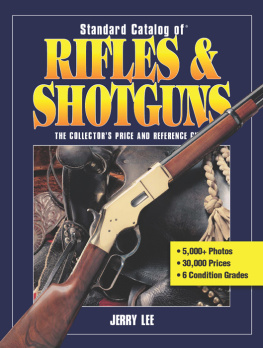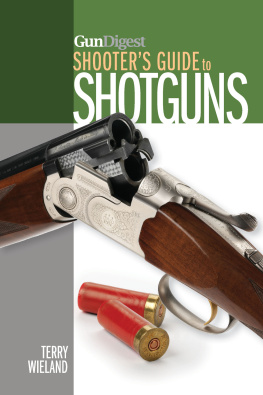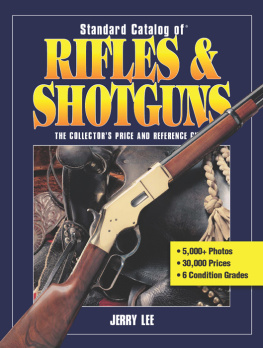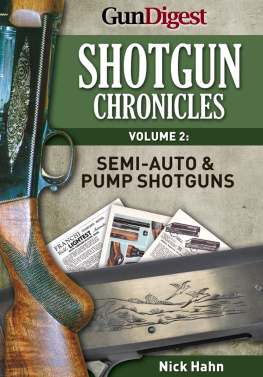

This edition is published by PICKLE PARTNERS PUBLISHINGwww.pp-publishing.com
To join our mailing list for new titles or for issues with our books picklepublishing@gmail.com
Or on Facebook
Text originally published in 1961 under the same title.
Pickle Partners Publishing 2015, all rights reserved. No part of this publication may be reproduced, stored in a retrieval system or transmitted by any means, electrical, mechanical or otherwise without the written permission of the copyright holder.
Publishers Note
Although in most cases we have retained the Authors original spelling and grammar to authentically reproduce the work of the Author and the original intent of such material, some additional notes and clarifications have been added for the modern readers benefit.
We have also made every effort to include all maps and illustrations of the original edition the limitations of formatting do not allow of including larger maps, we will upload as many of these maps as possible.
COMPLETE BOOK OF RIFLES AND SHOTGUNS
WITH A SEVEN-LESSON RIFLE SHOOTING COURSE
BY
JACK OCONNOR
Drawings by RAY PIOCH
Editorial Supervision by WILLIAM SILL
TABLE OF CONTENTS
Contents
PART ONETHE RIFLE
CHAPTER ONEThe Origin of Shoulder Arms
THE EXCELLENT SPORTING RIFLES AND SHOTGUNS THAT ARE ENJOYED today are the outgrowth of the work of many people over a period of six centuries. The original incentive to develop firearms was a military one. There are many chapters in the story of how the first crude cannons, which tossed iron balls and sometimes only stones, evolved into the light shoulder arms that were reliable and accurate enough to be used for hunting.
BASIC SHOULDER ARMS COMPONENTS
The basic parts of any weapon fired from the shoulder are (1) the barrel, which confines the powder charge and directs the bullet or the shot, (2) the stock or wooden part of the weapon that the shooter holds to his shoulder, and (3) the lock, which today is part of the action.
The components of the charge are (1) the missile, which can consist of a single projectile (bullet), many small projectiles (shot), or a bullet and shot, a type of ammunition once used with United States Army muskets; (2) the powder charge, which creates gas as it burns and propels the missile; (3) a priming powder or cap, which ignites the powder charge. From the earliest days of shoulder arms in the Fourteenth Century until development of the self-contained cartridge in the Nineteenth Century, these components were carried separatelythe bullets or shot in a pouch, the powder in a horn and the percussion caps in a little box.
THE HISTORY OF GUNPOWDER
The development of any sort of firearms had to wait, of course, for the invention of gunpowder. That event didnt take place until late in the Middle Ages. It is now generally agreed that gunpowder was invented in the East, probably in China. It seems to have been used there, however, only for firecrackers. Some authorities believe that gunpowder is an outgrowth of Greek fire, an incendiary composition or liquid fire. Its chemical nature is not definitely known. The inventor of Greek fire, Callinicus of Heliopolis, is said to have used it at Constantinople to set fire to enemy ships. The German alchemist monk, Berthold Schwartz, has been credited with inventing gunpowder, and the English philosopher, Roger Bacon, was also credited with the discovery because a formula for gunpowder is given in a work attributed to him.
COMPONENTS OF GUNPOWDER
Gunpowder is basically a mixture of saltpeter (potassium nitrate), charcoal (carbon) and sulphur. Mixed in certain proportions, these burn rapidly and generate a large amount of gas. When gunpowder is burned in a confined space, such as the bore of a gun, it explodes and the impact of this explosion is the force that propels the missile.
Often called black powder, early gunpowder was a finely ground mixture of these three basic ingredients. But as powder it had its faults. If it was packed too tightly, there was no air space between the particles to promote a flame. The powder would either smolder or not burn at all. If the powder was packed too loosely, the gas generated by its burning escaped past the projectile.
Powder makers eventually learned that by moistening the fine mixture of powder and making it into a cake, it could then be broken up into uniform grains. This was done by passing the cake through fine screens. The powder makers also discovered that the burning rate of black powder could be controlled by the size of the grains.
THE FIRST PORTABLE ARMS MECHANISMS
The first portable arms were hand cannons which were used in the late Fourteenth Century. They had bores that ranged between and 1 inch in diameter and straight wooden stocks that were little more than handles. To fire one of these hand cannons, the gunner thrust a piece of heated wire into a touchhole in the breech. This meant that there had to be a fire or hot coals nearby. This clumsy and dangerous process continued until the development of the match, which was a long cord of hemp, flax or cotton saturated beforehand in saltpeter or the lees of wine. The match burned slowly without a flame, in much the same way as a piece of punk which children use to set off firecrackers. Both ends of the match were kept burning, so that if one went out, it could be relighted from the other.

Among the earliest shoulder arms was the roughly constructed handculverin, an adaptation of the cannon with a crude wooden stock.
In order to fire, the gunner had to hold the gun with one hand and with the other touch the lighted match to the priming powder in the touchhole. This method was improved upon when weapons makers moved the touchhole from the top of the breech to the side. A small metal pan was placed beside the touchhole to hold the priming powder. This flashpan was eventually outfitted with a cover that kept the powder dry. Aiming, of course, was only approximate, but all the essentials of the gunlock, stock and barrelwere there, crude as they were.
THE MATCHLOCK
The first action used with shoulder arms was the matchlock, which employed a serpentine or an S-shaped piece of metal that held the smoldering match. When a shooter was ready to fire, he pressed one end of the serpentine. This pressure brought the opposite end, which held the glowing match, into contact with the priming powder in the pan. The powder went off, propelling the projectile. The end of the serpentine that the shooter pressed was actually the first trigger. This trigger allowed the matchlock to be held with two hands and thus enabled the shooter to aim more accurately. The next innovation was a match holder that could be locked under spring tension and released by a more fully developed trigger mechanism.
While the matchlock was being developed, the straight stock of the hand cannon was given a bend, which made it somewhat resemble the form of the modern stock. A weapon of this type is called an arquebus. It was made famous in the Sixteenth Century by Spanish soldiers. Weighing between 40 and 50 pounds and requiring two men to operate it, the arquebus was rested on a forked stick and had a range of about 100 yards.

Next page
















